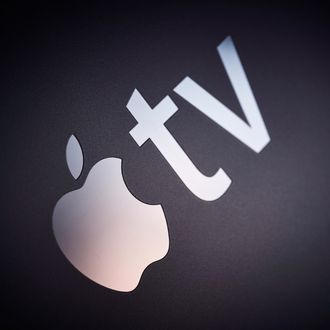
It’s been nearly six months since Apple CEO Tim Cook announced that Amazon Prime Video would be coming to Apple TV — and today, it’s finally here. The arrival of the new app also (presumably) means that consumers will be able to buy the Apple TV from Amazon’s storefront, after a long cold war in which Amazon refused to sell the Apple product.
Amazon’s CEO, Jeff Bezos, had made Apple TV allowing Amazon Prime Video an explicit stipulation of allowing Apple TV back into Amazon’s storefront. “We want our player, our Prime Video player, to be on the device, and we want it to be on the device with acceptable business terms,” said Bezos in 2016. “And if you can’t, then we don’t want to sell it to our customers, because they’re going to be buying it thinking they can watch Prime Video and then they’re going to be disappointed. And they’re going to return it.”
But if Apple and Amazon have finally made up, the streaming-platform wars are heating up elsewhere: A similar dispute is brewing between Amazon and Alphabet, the holding company that owns Google. The Google Chromecast device doesn’t support Amazon Prime Video, and Amazon’s Fire TV streaming device doesn’t support Google Play. Amazon’s Echo Show, a smart speaker with a seven-inch screen, shipped with a working YouTube app, but Alphabet decided to pull that. When Amazon attempted to simply build a website work-around to still offer YouTube video to customers, Alphabet also shut down that option as well.
The real point of contention is that controlling streaming video — increasingly enabled by speaking to your TV or remote — is an entry point into a larger arena: controlling all the gadgets in your house, whether that’s listening to music or adjusting your smart thermostat or lights. Amazon has a large head start with its Echo speaker and Alexa framework, which has seen quick uptake from third-party manufacturers. The Google Home and Chromecast have a smaller foothold, but arguably a superior product. And Apple — led by the Apple TV, its smart-home platform HomeKit, and (someday) its HomePod smart speaker — would like to be in the mix as well.
As large tech companies continue to jostle for space in adjacent markets, there are increasingly fewer reasons for the devices put out by each of the companies to support services from competitors. The solution for cord-cutters is simply to head to companies like Roku that remain largely outside of the fracas and stay neutral in carrying content networks.
But Roku may face major struggles in 2018. The company made its IPO in late 2017, when many analysts were leery about the prospect.* It’s currently trading above its IPO price, but Roku still has yet to turn a profit, and it competes against Google, Amazon, and Apple (and to a lesser degree, the Sony PlayStation and Microsoft Xbox console platforms). Ultimately, Roku’s success or failure will have very little to do with who offers the best video-streaming device, and everything to do with who controls everything surrounding it.
* The original version of this article incorrectly stated that Roku had not yet issued an IPO. We have updated to reflect that it is already a publicly traded company.




